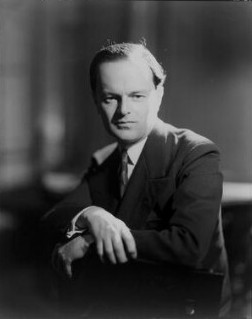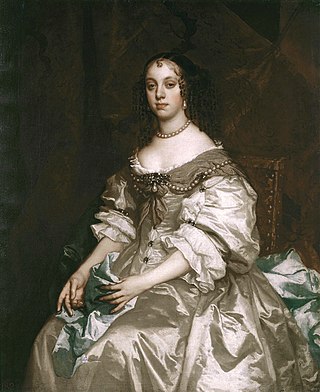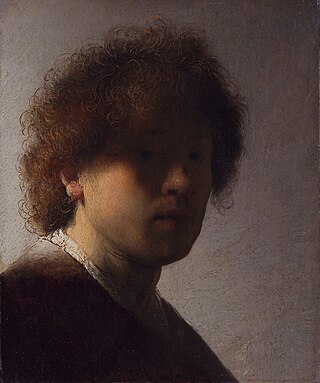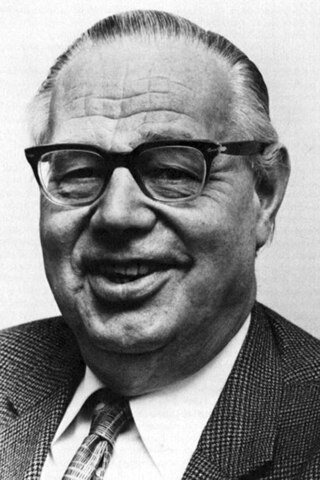Related Research Articles

The Mauritshuis is an art museum in The Hague, Netherlands. The museum houses the Royal Cabinet of Paintings which consists of 854 objects, mostly Dutch Golden Age paintings. The collection contains works by Johannes Vermeer, Rembrandt van Rijn, Jan Steen, Paulus Potter, Frans Hals, Jacob van Ruisdael, Hans Holbein the Younger, and others. Originally, the 17th-century building was the residence of count John Maurice of Nassau. It is now the property of the government of the Netherlands and is listed in the top 100 Dutch heritage sites.

Kenneth Mackenzie Clark, Baron Clark was an English art historian, museum director, and broadcaster. After running two important art galleries in the 1930s and 1940s, he came to wider public notice on television, presenting a succession of programmes on the arts during the 1950s and 1960s, culminating in the Civilisation series in 1969.

Sir Anthony van Dyck was a Flemish Baroque artist who became the leading court painter in England after success in the Spanish Netherlands and Italy.
Francis James Herbert Haskell, was an English art historian, whose writings placed emphasis on the social history of art. He wrote one of the first and most influential patronage studies, Patrons and Painters.

Jan Lievens was a Dutch Golden Age painter who was associated with his close contemporary Rembrandt, a year older, in the early parts of their careers. They shared a birthplace in Leiden, training with Pieter Lastman in Amsterdam, where they shared a studio for about five years until 1631. Like Rembrandt he painted both portraits and history paintings, but unlike him Lievens' career took him away from Amsterdam to London, Antwerp, The Hague and Berlin.

Cornelius Johnson or Cornelis Janssens van Ceulen was an English painter of portraits of Dutch or Flemish parentage. He was active in England, from at least 1618 to 1643, when he moved to Middelburg in the Netherlands to escape the English Civil War. Between 1646 and 1652 he lived in Amsterdam, before settling in Utrecht, where he died.
William Reinhold Valentiner was a German-American art historian, art critic and museum administrator. He was educated and trained in Europe, first working at the Mauritshuis in The Hague and at museums in Berlin.
Sir Oliver Nicholas Millar was a British art historian. He was an expert on 17th-century British painting, and a leading authority on Anthony van Dyck in particular. He served in the Royal Household for 41 years from 1947, becoming Surveyor of The Queen's Pictures in 1972. He was the first Director of the Royal Collection from 1987. He served in both offices until his retirement in 1988.

Adriaen Hanneman was a Dutch Golden Age painter best known for his portraits of the exiled British royal court. His style was strongly influenced by his contemporary, Anthony van Dyck.
Sir Lionel Henry Cust was a British art historian, courtier and museum director. He was director of the National Portrait Gallery from 1895 to 1909 and co-edited The Burlington Magazine from 1909 to 1919. He was the father of Lionel George Archer Cust.

The title of Principal Painter in Ordinary to the King or Queen of England or, later, Great Britain, was awarded to a number of artists, nearly all mainly portraitists. It was different from the role of Serjeant Painter, and similar to the earlier role of "King's Painter". Other painters, for example Nicholas Hilliard had similar roles with different titles. "Principal Painter in Ordinary", first used for Sir Anthony Van Dyck, became settled as the usual title with John Riley in 1689.

A Man with a Quilted Sleeve is a painting of about 1510 by the Venetian painter Titian in the National Gallery, London, measuring 81.2 by 66.3 centimetres. Though the quality of the painting has always been praised, there has been much discussion as to the identity of the sitter. It was long thought to be a portrait of Ariosto, then a self-portrait, but since 2017 has been called Portrait of Gerolamo (?) Barbarigo by the gallery, having also been called merely Portrait of a Man, the title used here, The Man with the Blue Sleeve, and no doubt other variants.

Christopher Paul Hadley Brown, CBE is a British art historian and academic. He was director of the Ashmolean Museum in Oxford, England from 1998 to 2014. He is recognised as an authority on Sir Anthony van Dyck.

The dozens of self-portraits by Rembrandt were an important part of his oeuvre. Rembrandt created approaching one hundred self-portraits including over forty paintings, thirty-one etchings and about seven drawings; some remain uncertain as to the identity of either the subject or the artist, or the definition of a portrait.
Seymour Slive was an American art historian, who served as director of the Harvard Art Museums from 1975 to 1984. Slive was a scholar of Dutch art, specifically of the artists Rembrandt, Frans Hals, and Jacob van Ruisdael.

Self-Portrait at the Age of 34 is a self-portrait by Rembrandt, dating to 1640 and now in the National Gallery in London. The painting is one of many self-portraits by Rembrandt, in both painting and etching, to show the artist in a fancy costume from the previous century. In this case specific influences in the pose have long been recognised from Raphael's Portrait of Baldassare Castiglione and Titian's A Man with a Quilted Sleeve in the National Gallery. Rembrandt saw both of these in Amsterdam, in his day the centre of Europe's art trade, and made a sketch of the Raphael, with its price.

Self-Portrait with Dishevelled Hair, also known as Self-Portrait at an Early Age, is an early self-portrait by the Dutch Golden Age artist Rembrandt. The painting has been in the Rijksmuseum Amsterdam collection since 1960, and is an exercise in chiaroscuro. It is one of the earliest of over forty painted self-portraits by Rembrandt, there is a copy in the collection of the National Trust which was created by his workshop.

The Young Bull or The Bull is an oil painting of a bull by Paulus Potter. It is in the collection of the Mauritshuis in The Hague in the Netherlands.

Jan Gerrit van Gelder was a Dutch art historian.
Delia Mary, Lady Millar C.V.O., was the wife of the British art historian and Surveyor of the Queen’s Pictures, Sir Oliver Nicholas Millar and an art historian in her own right. A specialist in the art of the Victorian era, she was appointed Commander of the Royal Victorian Order in recognition of her services to the Royal Collection.
References
- ↑ Dictionary
- ↑ Dictionary
- ↑ Macleod, Donald (30 December 2000). "Honours for art, science - and student fees". The Guardian. Retrieved 5 March 2013.